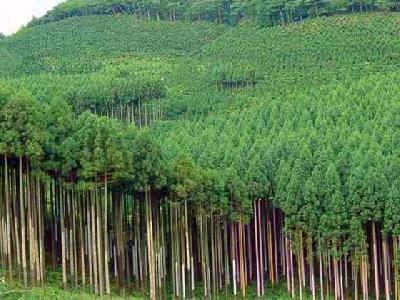|
The Big Cedars of Omiwa are located in Tamozawa, Kanayama Town, Mogami County, Yamagata prefecture. They were originally planted for lumber.
The cedars, up to 128, are some of the biggest cultivated trees of their kind in Japan. They were first planted as saplings back in the Edo period, probably in 1764, making them about 230 years old.
Mogami district has much snow in winter. In May 2006, there was such a heavy snowfall that six trees were bent by the weight of snow. As a result, these six trees, all of them over 250 years old, were cut down.
To see such enormous trees felled was overwhelming, particularly because two of the trees were 50m tall with trunks 80cm in circumference. Their immensity was a living demonstration of history.
The cedars, up to 128, are some of the biggest cultivated trees of their kind in Japan. They were first planted as saplings back in the Edo period, probably in 1764, making them about 230 years old.
Mogami district has much snow in winter. In May 2006, there was such a heavy snowfall that six trees were bent by the weight of snow. As a result, these six trees, all of them over 250 years old, were cut down.
To see such enormous trees felled was overwhelming, particularly because two of the trees were 50m tall with trunks 80cm in circumference. Their immensity was a living demonstration of history.
| [+ADDRESS] | 
|















